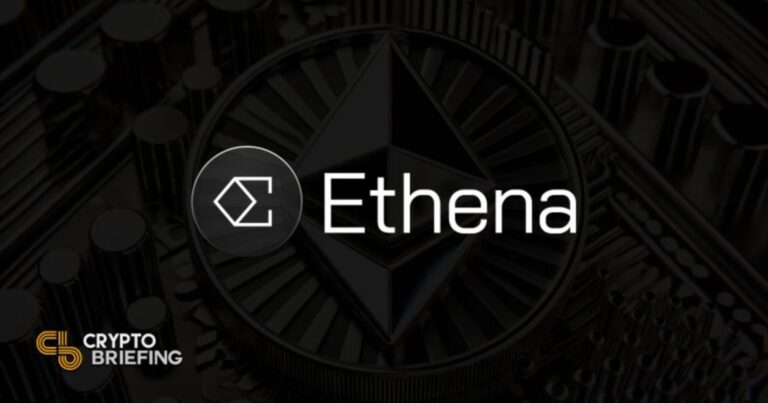Ethena Crypto’s Exit from Germany: A Turning Point for Synthetic Stablecoins
In a significant shift that may alter the dynamics of digital currencies,Ethena crypto has declared its withdrawal from the German market. This move raises critical questions about the future of synthetic stablecoins and its associated token, ENA. The decision comes in response to escalating regulatory pressures and growing investor apprehension regarding the sustainability of projects within the fast-paced cryptocurrency landscape. As authorities tighten regulations on digital asset operations, Ethena’s exit could represent a crucial juncture not only for synthetic stablecoins but also for overall confidence in the industry. This article delves into the ramifications of Ethena’s departure from Germany and what it signifies for ENA and similar cryptocurrencies.
Ethena’s Departure: Regulatory Challenges Facing Synthetic Stablecoins
The sudden exit of Ethena Crypto from Germany has triggered concerns about the future viability of synthetic stablecoins across Europe. With regulatory environments becoming more stringent, industry experts are questioning whether these innovative financial instruments can thrive under such conditions. Analysts believe that actions taken by German authorities reflect a broader trend towards tighter regulations aimed at enhancing consumer protection and ensuring financial stability.Investors and developers alike are increasingly anxious as they evaluate how these changes will effect synthetic stablecoin projects, particularly those linked to conventional currencies.
Several key factors contribute to this precarious situation:
- Regulatory Ambiguity: the unclear legal framework surrounding synthetic assets leaves stakeholders uncertain about compliance requirements.
- Heightened Oversight: Regulatory agencies are intensifying their scrutiny on products deemed high-risk.
- Nervous Market Sentiment: The departure of a major player like Ethena may foster negative perceptions that undermine investor trust.
The implications for ENA, Ethena’s native token, remain uncertain as it faces an unpredictable path ahead. without clear guidance moving forward, challenges could arise within the synthetic stablecoin sector that stifle innovation and deter investment opportunities.
Future Prospects: Evaluating ENA Amidst Market Changes
The withdrawal of Ethena from Germany prompts essential inquiries regarding the sustainability of synthetic stablecoin initiatives like ENA. This advancement suggests potential regulatory obstacles that could impact how such assets operate throughout Europe. Stakeholders now find themselves navigating an habitat filled with uncertainty as stricter regulations loom on the horizon; this scenario might led to reduced innovation and adoption rates in this sector—forcing companies like ENA to adapt quickly or risk becoming obsolete.
The fallout could diminish competition while limiting market diversity, compelling consumers to reassess what value propositions exist within synthetic stablecoins.
A few critical considerations emerge concerning ENA’s future alongside other players in this space:
- Compliance Strategies: ENA may need to revisit its compliance frameworks to align with evolving regulations effectively.
- User Confidence: The exit of a competitor might erode consumer trust in ongoing projects within this domain.
- Cautious Investment Climate: Investors may adopt a more conservative approach leading possibly to funding shortages for ongoing developments.
| Metrical Comparison | Ethena | ENA |
|---|---|---|
| Total Market Capitalization | $500 Million | $300 Million |
Expert Insights: Navigating Regulatory Landscapes in Cryptocurrency Evolution
The recent departure by Ethena Crypto underscores mounting challenges faced by firms operating amid rapidly changing cryptocurrency regulations worldwide. As governments strive toward establishing clearer guidelines, companies involved with creating synthetic stablecoins—like Ethena—are confronted with both uncertainty and specific compliance hurdles unique to their jurisdictions.
The Federal Financial Supervisory Authority (bafin) in Germany has been particularly proactive; emphasizing adherence not only local laws but also European standards is paramount.
This increased scrutiny reflects broader global trends where various jurisdictions either tighten controls over burgeoning digital asset markets or create supportive environments conducive to innovation while safeguarding investors’ interests.
| Country/Region | Regulatory Stance |
|---|---|
| Germany | Strict : Emphasis on consumer protection & rigorous compliance   |
| United States   | Varied : State-specific inconsistencies complicate operations   |
| Singapore   | Supportive : Encourages innovation through clear guidelines   |
| Switzerland   < | Liberal : Attracts businesses via crypto-pleasant policies </> </> </> </> </> . . . . . . … … … … ……. ……. .. .. .. .. …………… …. ………… …… ……………………………………………….. ……………………………………………………………………… ………………………………………………………………………………… ………………………………………………………………………………………………………. …………………………………………………………………………………………………………………… ……………………………………………………………………………………………………………………………………………………………………………………………………………………………………………………………………. …………………………………………………………………………………………………………………………………………. …… .. ….. …….. …….. … ….. … .com/2023/10/01/synthetic-stablecoin-market-report.html” target=”_blank” rel=”noopener noreferrer”> |



